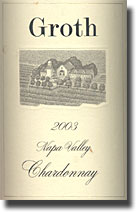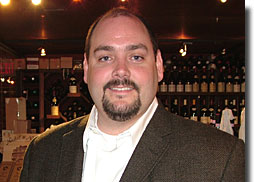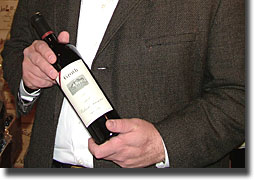|
|
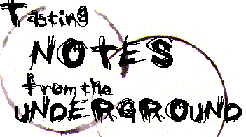 |
|
|||
|
a 
"I thought it was important to work in the production side of the business," he explained, "so I worked with the winemaking staff and the vineyard staff for about a year. I went back to school and got my MBA from UC Davis and after graduating in 2003, I started in the sales department, which I've been doing since then. Right now, the states that I'm responsible for are basically from Montana to Ohio and down to Texas, so I take care of the middle of the country. Andrew is one of three Groth siblings; sister Suzanne is currently Groth's marketing manager, while Elizabeth opened her own wine store in Atlanta, Georgia, after working at the winery for about eight years. Still, it's all in the family. "When you go and visit Elizabeth," he laughs, "you work the store." The Groth winery has held to a consistent vision since its inception in 1982, and in all that time, they've had the same vineyard manager and only two winemakers. "Ben Benson, our vineyard manager, actually owned our Hillview Vineyard in the Oak Knoll District with a group of other investors, where we get our Chardonnay and Merlot," Andrew told me, "and his part of the partnership was to farm it. He's been farming that piece of land since 1975, I think, and the rest of our land since 1981-82. "Our current winemaker, Michael Weis is going into his 13th crush with us. He worked for Inglenook when they had the Oakville facility early on in his career, and then for Vichon, later called La Famiglia di Robert Mondavi. He's been working in Oakville for about 25 years of his winemaking life, which is the vast majority of his time in the business." The Groth vineyards have undergone extensive replanting over the last several years, primarily due to the age of the vines, according to Andrew, but other factors were involved as well. "When we first started, we had Chardonnay in Oakville," he elaborated, "(but) Oakville's too hot for Chardonnay, so in the mid - 90s, we started replanting our Hillview property, putting our Chardonnay there and moving our Sauvignon Blanc up to the warmer climate, because that's where it needed to be. From there, we started focusing more on Cabernet replanting. We are a Cabernet house; that is our passion, that is what we focus on. "You hear a lot about "old vine" this and "old vine" that. There's a character that does come out in older vine Zinfandel, and you can taste it; that's not the case in Cabernet. You don't see a lot of old vine Cabernets, and the reason you don't see it is because there's no added character. As a Cabernet vine gets into 30 - 35 years old, it can just no longer get the grapes as ripe as you want them, so there's really no reason to have older vine Cabernet. 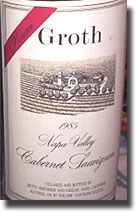 "Our most famous Cabernet was the '85 Reserve, with the perfect score
from (Robert) Parker and the first non - Bordeaux wine ever to get a
perfect score and all of that, and those were 12 year old vines at the
time. The 1996 Dalla Valle Maya, which was the only other non - Bordeaux
wine to get a perfect score, also an Oakville wine, also was from
younger vines. Some of the most famous Cabernets you've heard about and
tried over the years have been from younger Cabernet vines. That's when
the vines produce the best fruit. "Our most famous Cabernet was the '85 Reserve, with the perfect score
from (Robert) Parker and the first non - Bordeaux wine ever to get a
perfect score and all of that, and those were 12 year old vines at the
time. The 1996 Dalla Valle Maya, which was the only other non - Bordeaux
wine to get a perfect score, also an Oakville wine, also was from
younger vines. Some of the most famous Cabernets you've heard about and
tried over the years have been from younger Cabernet vines. That's when
the vines produce the best fruit. "Our vineyard in Oakville was originally planted in the mid - 70s by Justin Meyer, one of the founders of Silver Oak, and actually his payment for planting our 121 acres in Oakville was five acres and a house on the back of the vineyard. That vineyard is still known as Bonny's Vineyard, and Silver Oak used to make that single vineyard Cabernet. Bonny's was replanted about the same time as when we started our replanting, in '98 and '99." Replanting was so extensive, even the direction of rows of most blocks were changed from east - west to north - south, taking advantage of both sun and wind. "We still have one small area of Chardonnay on the Oakville property that has the east - west rows," Andrew said, "everything (else) is now north - south. Oakville's very windy during the growing season, and that wind really keeps the humidity low in the individual bunches and also allows us to take much better advantage of the sun. And actually, as you go through the valley, you'll see that most people have changed their rows from east - west to north - south." Taking advantage of the sun also involves using the "lyre" quadrilateral trellis system. Besides being a devigorating agent in a vigorous soil, the non - traditional four cordons spread the vine out, and because of the vertical shoot positioning, expose the fruit to light and air, thus promoting better skin development. Due to replanting and the resulting youth of the Cabernet vines, the decision was made not to make a Reserve from 2000 through 2003, but 2004 just might be the vintage in which the Reserve program resumes. Historically, the Reserve has always come from Block 1, very close to Bonny's Vineyard. Because the Groths felt that it had always been a "wine of place," they made the decision not to release a Reserve bottling until the vines matured to the point where their high standard of quality would be met. Says Andrew, "(The Reserve) had always been focused on the best fruit on our land; this is the best we can do with it and the character that you get in this fruit is different from that of other Oakville vineyards. We believe that very strongly, and we know it's the case, because you can taste it in the wine. You have to remember, my father's an accountant, so when he looks at his spreadsheets and sees that we have no Reserve revenue from 2000 and won't see revenue again until 2007 at the very earliest, that's a seven year drought of a very small production item. But it is not exactly inexpensive wine, so it was a very nice revenue piece, and it's very difficult to see that gone for all that time, but at the same time, it's the right thing to do for ourselves and for our customers, and the overriding principle for our winery is looking into the future. We're not concerned as much with this quarter's results as we are with the results of the next quarter century or forty years or fifty years. That's why we believe very strongly in sustainable farming, because this land needs to be making wonderful Cabernet 200 years from now, and we believe it will." Perhaps the single attribute that stands out the most with the Groth wines is their impeccable balance, and that, of course, is by design. For instance, the Chardonnay, while barrel fermented, only sees one third new oak, and doesn't undergo malolactic fermentation, so it maintains its palate cleansing acidity. And the Cabernet, though fruit forward, is by no means a fruit bomb; its components are all in perfect proportion, making for a seamless, food friendly wine that's a pleasure to drink young, yet has excellent aging potential, as the '82 and '85 Reserve demonstrate. Reporting from Day-twah, Bastardo |
|||||
|
Other Recent Napa Wine Explorations Winemaker Profile: Whitney Fisher Ladera Vineyards, A Rising Star in Napa
Back to the
Underground
Index
|
|||||
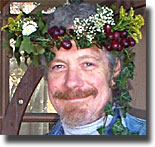

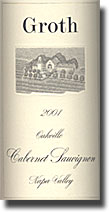 After nary a blip over the last several years, the wines of
After nary a blip over the last several years, the wines of
